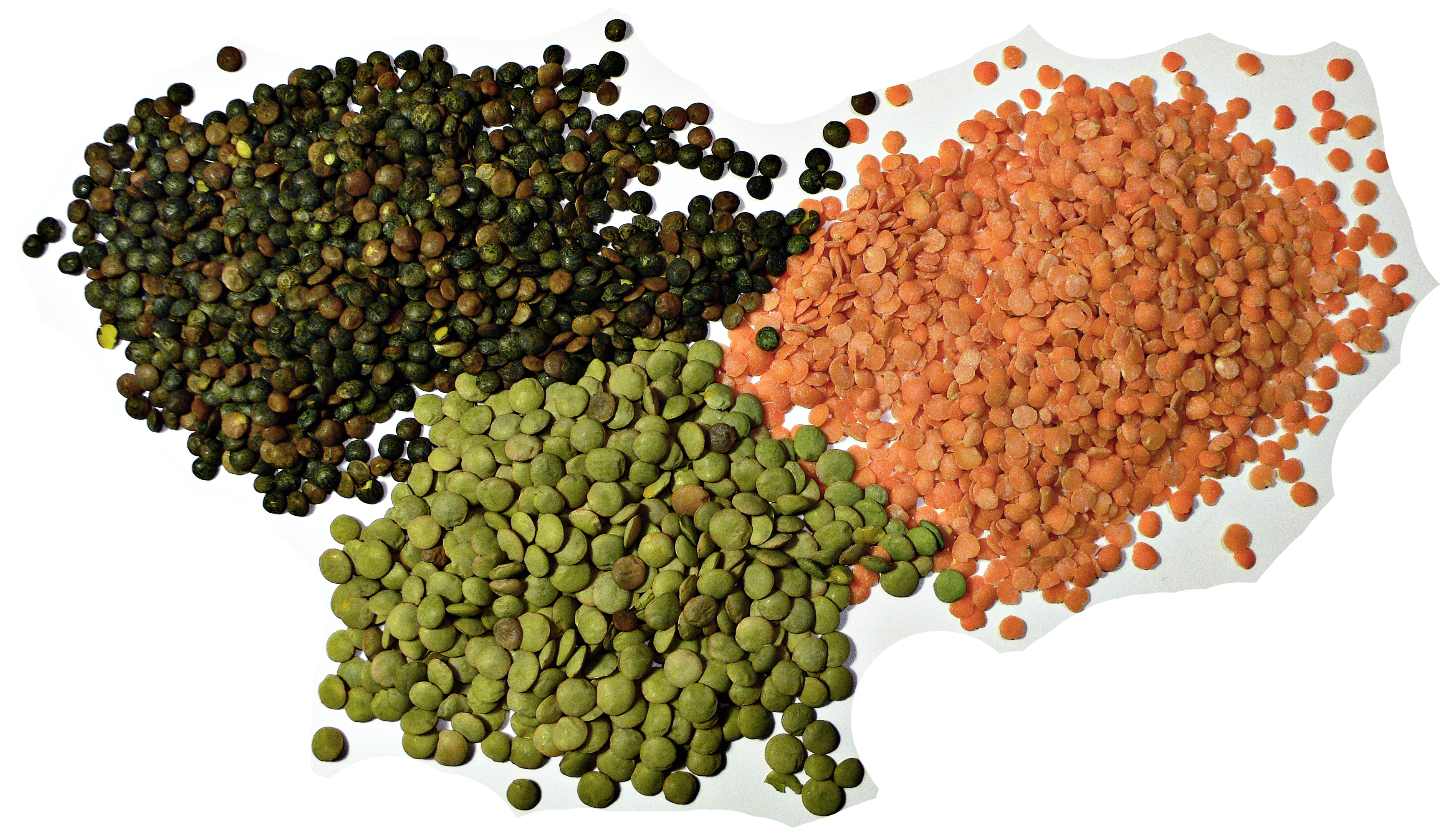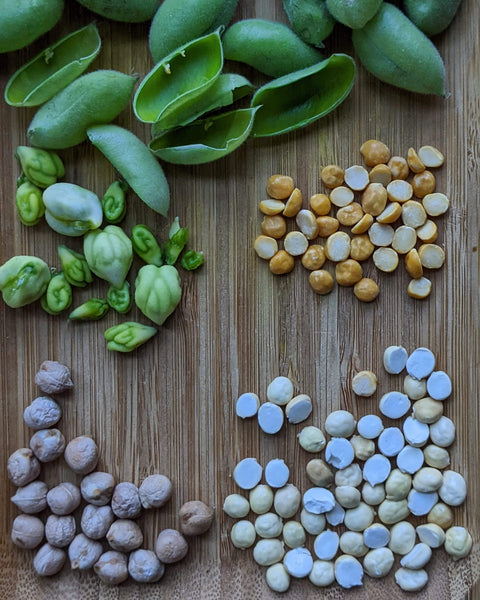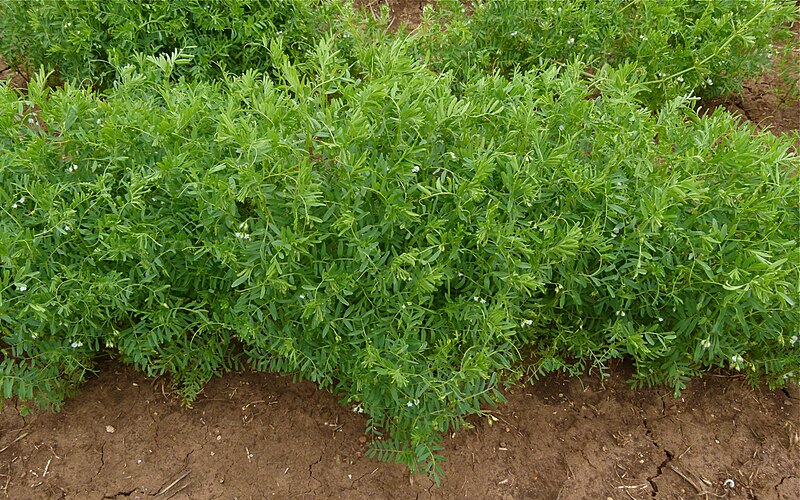Lentils and Pulses - a journey from seed to pantry!

Do you know what a lentil or a dal (i.e., split pea) plant looks like? or how split peas are processed for them to look the way they do in the store? The differences between beans, legumes, pulses, dals? Here's also a fascinating insight into this journey from planting seeds to your pantry.

A colorful mixture of lentils, beans, legumes and pulses
Understanding Legumes: Lentils, Split Peas, Pulses, and Beans
Both lentils and split peas are members of the legume Fabaceae family, but they are distinct from each other. Split peas are dried peas that have had their outer skin removed and then split in half during processing. On the other hand, lentils are extracted from their pods and kept whole.
"Dal," a Hindi term, refers to split peas, a staple in Indian and South Asian diets. The term "pulse" is used to denote either dried lentils or split peas. Unlike lentils, which resemble small, flat disks, beans are usually rounder and oval or kidney-shaped.
Lentils cause less flatulence compared to beans as they contain fewer phytates and less indigestible sugar.
Lentil Production in Canada
Interestingly, Canada grows a significant amount of lentils, especially in the province of Saskatchewan. Lentils started being grown in Canada in the 1970s, and today there are over 5,000 active lentil farmers. Lentil plants are usually short (20-65 cm) and are planted in early May in Saskatchewan.
Growing lentils is beneficial for soil health due to their ability to fix nitrogen into the soil, decreasing nitrogen demand and reducing fertilizer use.

Puy lentil (left), green lentil (center), and masoor dal (right) (wiki commons)
Global Production of Pigeon Peas and Chickpeas
The largest producer of pigeon peas, also known as toor dal, is India, followed by Myanmar, Malawi, Tanzania, Kenya, and others. Chickpeas are also mainly produced by India, followed by Turkey, Myanmar, and Pakistan.
Chickpeas are a staple in diets in India, the Middle East, and Africa, whereas they are more popular in Western countries as a part of hummus (arabic word for 'chickpeas').

Many forms of Chickpeas - fresh out of the pod, dried, husked and split, and roasted
Nutritional and Health Benefits of Lentils
Pulse legumes, including lentils, are being increasingly studied for their potential health benefits. These include aiding bile acid binding, inhibiting angiotensin-1 converting enzyme, lowering cholesterol, controlling blood glucose, and offering protective effects against diseases like peripheral arterial disease, diabetes, and cancer.
Lentils are rich in protein (20-30%), carbohydrates (47-65%), and micronutrients (2-4%). They primarily contain soluble and insoluble fiber, as well as starch. Lentil proteins provide essential amino acids like leucine, lysine, threonine, and phenylalanine but are deficient in sulphur-containing amino acids like methionine and cysteine. Additionally, lentil seeds are a good source of various vitamins and minerals like potassium, phosphorus, magnesium, calcium, selenium, and folate.
Production and Processing of Dals

Lentil plant is a low-growing shrub usually around 40cm tall (wiki commons)
It all starts with the farmer who engages in these four essential steps:
1. Land Preparation (1-2 weeks): This involves the removal of weeds and previous crop residues, followed by ploughing or tilling to improve the soil's physical condition, making it easier for seeds to take root.
2. Seed Selection and Sowing (1-2 days): High-quality, disease-free seeds are selected and sown using a seed drill machine for even distribution. Sowing is generally done at the onset of monsoon in India, i.e., around June-July.
3. Crop Management (4-5 months): This includes regular watering, weed control, and pest control. The use of machinery here depends on the scale of the farming operation but could include irrigation equipment, sprayers for pesticides and herbicides, and tractor-mounted cultivators for mechanical weed control.
4. Harvesting (1-3 weeks): Pigeon peas are usually ready for harvest in about 175 to 200 days post sowing, depending on the variety and climatic conditions. Most lentils need even less time of 80-110 days. Harvesting is done using a combine harvester or manually, if the scale of farming is small.
After harvesting, the processing for pigeon peas (and other split dals) that are most commonly consumed in various cuisines of India involves:
5. Drying (1-2 weeks): The harvested pigeon peas are sun-dried to bring down the moisture content to around 10-12%, suitable for further processing. This prevents microbial decay and enhances storage life. If the moisture content is lower, the lentils/peas tend to crack or shatter.
6. Dehulling/Decorticating (1-2 days): The dry pigeon peas are then processed through a dehulling or decorticating machine, which removes the outer shell or husk from the grain.
7. Splitting (1-2 days): The dehulled peas are then split into two halves using a dal mill machine. This exposes the dal's inner part, which cooks faster and is easier to digest.
8. Cleaning and Grading (1-2 days): The split peas undergo cleaning to remove any remaining husk particles, stones, or other impurities. Grading is also done to sort the dal based on size and quality. Various types of sieving and grading machines are used for this purpose.
9. Packaging (1-2 days): The final product, toor dal, is then packaged in different sizes using packaging machines and prepared for distribution to retail outlets.
Each step in this process plays a vital role.



